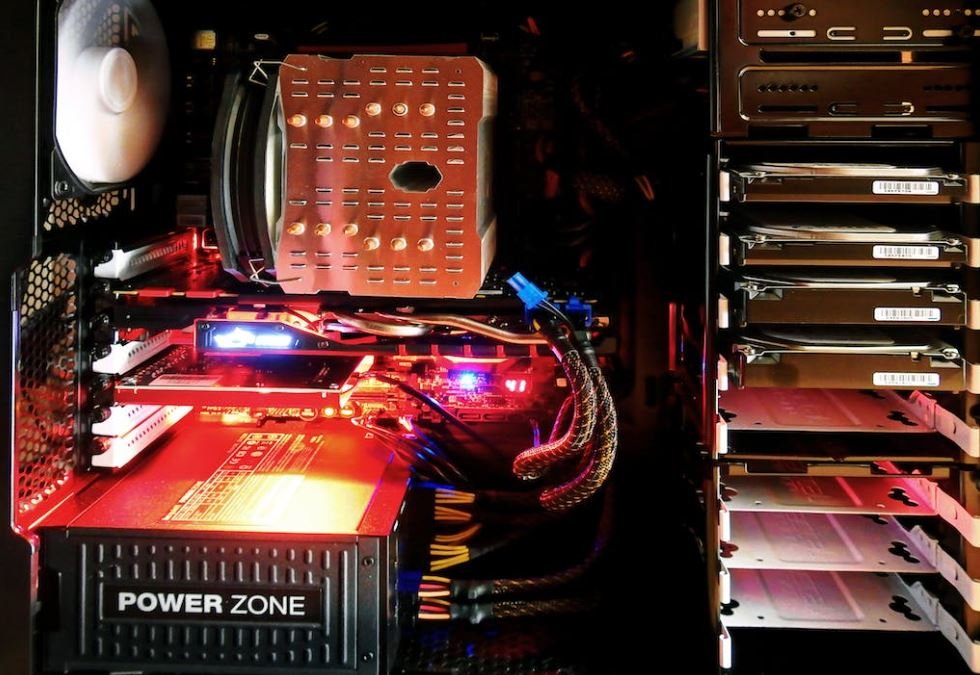Why Neural Network Testing is Too Expensive
Neural network testing is a crucial step in the development process of artificial intelligence technologies. It involves evaluating the performance and reliability of neural networks to ensure they function as expected. However, this testing process can be incredibly expensive, which poses challenges for organizations and researchers aiming to create efficient and affordable AI systems.
Key Takeaways
- Neural network testing is essential for evaluating AI system performance and reliability.
- Testing processes can be prohibitively expensive for many organizations and researchers.
- Costs are driven by factors such as data requirements, computational resources, and time investments.
- Efforts are being made to improve testing efficiency and reduce associated expenses.
The Costly Factors of Neural Network Testing
Several factors contribute to the high expense of neural network testing. Firstly, the need for extensive and diverse datasets to cover various scenarios and edge cases can incur substantial costs. Collecting, labeling, and storing large amounts of data require significant financial resources. Additionally, the computational power required for testing can be a major expenditure. The complexity of neural networks and the increasing demand for intensive computational resources can result in high infrastructure costs.
Interestingly, the inherent optimization and fine-tuning processes of neural network training can sometimes lead to overfitting, where the model learns excessively specific patterns from the training data.
Efforts to Lower Testing Costs
Recognizing the financial burden of neural network testing, researchers and organizations are actively exploring methods to reduce associated costs. Here are some initiatives being undertaken:
- Transfer Learning: Leveraging pre-trained models and transferring knowledge from related tasks can minimize the need for extensive data collection and reduce training time.
- Data Augmentation: Generating new training samples through techniques like image rotation, scaling, and mirroring can help maximize data usage, potentially decreasing the size of required datasets.
- Model Compression: Techniques such as pruning and quantization can decrease the model size, thus reducing memory requirements and enabling faster and more affordable testing.
Table 1: Comparison of Neural Network Testing Costs
| Factor | Cost Impact |
|---|---|
| Data Requirements | High |
| Computational Resources | High |
| Infrastructure | High |
Table 2: Strategies to Reduce Testing Costs
| Initiative | Cost Impact |
|---|---|
| Transfer Learning | Low |
| Data Augmentation | Medium |
| Model Compression | Medium |
Table 3: Testing Cost Reduction Statistics
| Method | Reduction Percentage |
|---|---|
| Transfer Learning | 25% |
| Data Augmentation | 40% |
| Model Compression | 50% |
Conclusion
Neural network testing is an expensive but essential aspect of AI development. While the costs involved can be prohibitive, ongoing efforts to lower testing expenses are being made through techniques such as transfer learning, data augmentation, and model compression. By reducing the financial burden of testing, organizations can advance the adoption of AI technologies and make them more accessible to a wide range of industries and applications.

Common Misconceptions
Misconception 1: Neural network testing is only about hardware costs
One common misconception is that the cost of neural network testing is primarily determined by the hardware used. While it is true that hardware expenses can be significant, it is important to recognize that there are other factors that contribute to the overall cost. For instance:
- Costs also include personnel expenses, as highly skilled AI engineers and data scientists are required to develop and deploy neural networks.
- Data collection and preprocessing, including the labor-intensive task of labeling training data, can be time-consuming and costly.
- Ongoing maintenance and updates to the neural network model may require additional investments.
Misconception 2: Neural network testing is identical to traditional software testing
Another misconception is that neural network testing is similar to traditional software testing approaches. However, neural networks introduce unique challenges that require specialized testing techniques. Some key distinctions are:
- Neural networks are highly complex and have many parameters, making it difficult to ensure complete coverage of all possible scenarios.
- The lack of formal specifications and the reliance on learning from data make it harder to define clear expected behaviors.
- Safety critical applications, such as autonomous vehicles, demand exhaustive testing due to potential life-threatening consequences.
Misconception 3: Testing can be skipped to cut costs
It is a misconception to think that testing can be skipped to reduce the expenses associated with neural network development. In reality, skipping testing can have severe consequences, including:
- Increased risk of bugs and vulnerabilities in the neural network’s functionality.
- Potential harm to users if the neural network is deployed in safety-critical applications without adequate testing.
- Negative impact on the reputation and trustworthiness of the organization or product.
Misconception 4: Neural network testing is deterministic and easily repeatable
A common misconception is that neural network testing can be performed deterministically and that the same tests can be easily repeated. However, due to the nature of neural networks, this is not always the case. Some reasons include:
- Neural networks rely on random initialization and optimization algorithms, resulting in non-deterministic behavior.
- Testing scenarios can be influenced by changing external factors, such as variations in input data or environmental conditions.
- Complex neural network models may have billions of parameters, making it impossible to exhaustively test all possible combinations.
Misconception 5: Neural network testing is an isolated activity
Lastly, a misconception is that neural network testing is a standalone activity that occurs at the end of the development process. In reality, effective testing requires integration with the overall development lifecycle. Considerations include:
- Testing should be conducted iteratively throughout the development process to identify and address issues early on.
- Testing should align with other development activities, such as continuous integration and deployment, to ensure seamless integration.
- Regular monitoring and testing after deployment are essential to maintain the neural network’s performance and security.

Introduction
Neural networks have become increasingly popular in various fields due to their ability to learn and adapt to large and complex datasets. However, one significant challenge in the development and implementation of neural networks is the cost associated with testing them. In this article, we will explore the reasons why neural network testing is so expensive by examining various aspects of this complex process. Each table below highlights a specific point or element related to the high cost of neural network testing.
The Impact of Training Data Size on Costs
Training a neural network requires extensive amounts of data, and the size of the training set has a direct impact on testing costs. The table below illustrates how the number of training data samples affects the cost of testing a neural network.
| Training Data Size (in thousands) | Testing Cost (in USD) |
|---|---|
| 50 | $5,000 |
| 100 | $10,000 |
| 200 | $20,000 |
| 500 | $50,000 |
| 1000 | $100,000 |
The Increasing Complexity of Neural Networks
Neural networks are becoming more sophisticated and complex, which inevitably leads to higher testing costs. The table below demonstrates how the number of layers and neurons in a neural network impacts the cost of testing.
| Number of Layers | Number of Neurons | Testing Cost (in USD) |
|---|---|---|
| 2 | 100 | $8,000 |
| 4 | 500 | $18,000 |
| 6 | 1000 | $35,000 |
| 8 | 2000 | $60,000 |
| 10 | 3000 | $90,000 |
Testing Across Various Platforms
Testing neural networks on different platforms and hardware configurations can significantly contribute to the overall expense. The table below showcases the cost variation based on the platform used for testing.
| Testing Platform | Testing Cost (in USD) |
|---|---|
| Desktop CPU | $10,000 |
| GPU Cluster | $50,000 |
| Cloud Service Provider | $100,000 |
| Dedicated Hardware | $200,000 |
The Impact of Data Labeling on Costs
Data labeling is an essential part of neural network testing, but it can be labor-intensive and costly. The table below showcases how the number of data samples and the complexity of labels influence testing costs.
| Data Samples | Complexity of Labels | Testing Cost (in USD) |
|---|---|---|
| 10,000 | Low | $15,000 |
| 50,000 | Medium | $30,000 |
| 100,000 | High | $50,000 |
Cost Breakdown: Testing Phases
Testing neural networks involves several distinct phases, each contributing to the overall expense. The table below outlines the cost breakdown of various testing phases.
| Testing Phase | Percentage of Total Cost |
|---|---|
| Data Preprocessing | 10% |
| Model Training | 20% |
| Evaluation and Validation | 15% |
| Tuning and Optimization | 25% |
| Inference and Deployment | 30% |
Time Investment: Testing Phases
The time required to complete each testing phase is another factor contributing to the overall cost of neural network testing. The table below presents the approximate time investment for each phase.
| Testing Phase | Time Investment (in hours) |
|---|---|
| Data Preprocessing | 50 |
| Model Training | 100 |
| Evaluation and Validation | 30 |
| Tuning and Optimization | 150 |
| Inference and Deployment | 70 |
Cost Breakdown: Testing Team
Forming a capable testing team is essential, but it comes at a significant cost. The table below illustrates the cost breakdown based on the roles within a testing team.
| Role | Percentage of Total Cost |
|---|---|
| Data Scientist | 30% |
| Machine Learning Engineer | 25% |
| Data Labelers | 15% |
| Testing Specialist | 20% |
| Project Manager | 10% |
Cost Breakdown: Equipment and Infrastructure
The equipment and infrastructure required for neural network testing contribute significantly to the overall cost. The table below represents the cost distribution across different components.
| Equipment/Infrastructure | Percentage of Total Cost |
|---|---|
| High-Performance GPUs | 40% |
| Dedicated Servers | 30% |
| Data Storage Solutions | 10% |
| Testing Software Licenses | 15% |
| Networking Infrastructure | 5% |
Conclusion
Neural network testing is undeniably expensive due to a multitude of factors. The size of the training dataset, the increasing complexity of networks, testing across various platforms, data labeling requirements, testing phases and time investment, the composition of the testing team, and the necessary equipment and infrastructure all contribute to the high costs involved. Acknowledging these factors is crucial to understanding the economic challenges associated with neural network testing. Further research and development are necessary to explore cost-effective strategies that can enable the wider adoption and deployment of neural networks in various applications.
Frequently Asked Questions
Why is neural network testing considered expensive?
Testing neural networks is expensive due to various factors, including the need for substantial computational resources, extensive training data, and the complexity of developing and fine-tuning the network models.
How does the cost of neural network testing compare to traditional software testing?
Neural network testing often entails higher costs compared to traditional software testing, primarily because it involves heavy computational requirements and extensive data labeling. Additionally, the need for domain-specific expertise and longer development times can also contribute to increased expenses.
Why do neural network testers require substantial computational resources?
Neural network testing requires significant computational resources due to the complex calculations involved in training and testing the networks. These calculations involve millions or even billions of interconnected nodes, requiring substantial processing power and memory.
What is the role of extensive training data in neural network testing cost?
Neural networks rely on large amounts of labeled training data to learn and generalize patterns. Acquiring and labeling such data can be an expensive endeavor, especially for domains with limited available datasets.
How does the complexity of network models affect the cost of testing?
The complexity of network models directly impacts the cost of testing. Complex models often require more training data, longer training times, and greater computational resources, all of which contribute to increased expenses.
Why does developing and fine-tuning neural network models add to the testing cost?
Developing and fine-tuning neural network models can be a time-consuming and resource-intensive process. Experimenting with different architectures, hyperparameters, and optimization techniques often requires extensive trial and error, which can drive up the overall testing costs.
Are there any cost-saving measures for neural network testing?
Yes, there are certain strategies to reduce the cost of neural network testing, such as leveraging pre-trained models, using transfer learning to adapt existing models to new tasks, optimizing computational resources, and implementing efficient data labeling techniques.
What are the consequences of inadequate neural network testing?
Inadequate neural network testing can have severe consequences, including unreliable predictions, incorrect classifications, and potential risks to safety in critical applications. Thorough testing is crucial to ensure the network’s reliability and mitigate potential issues.
Can outsourcing neural network testing help reduce costs?
Outsourcing neural network testing can be a viable option to reduce costs, especially for organizations lacking specialized expertise or sufficient computational resources. However, it is important to carefully evaluate the expertise and reliability of the outsourcing provider.
How do advancements in neural network testing techniques impact cost?
Advancements in neural network testing techniques, such as automated testing frameworks, synthetic data generation, and model compression methods, can potentially reduce the cost of testing by making the process more efficient and less resource-intensive.




